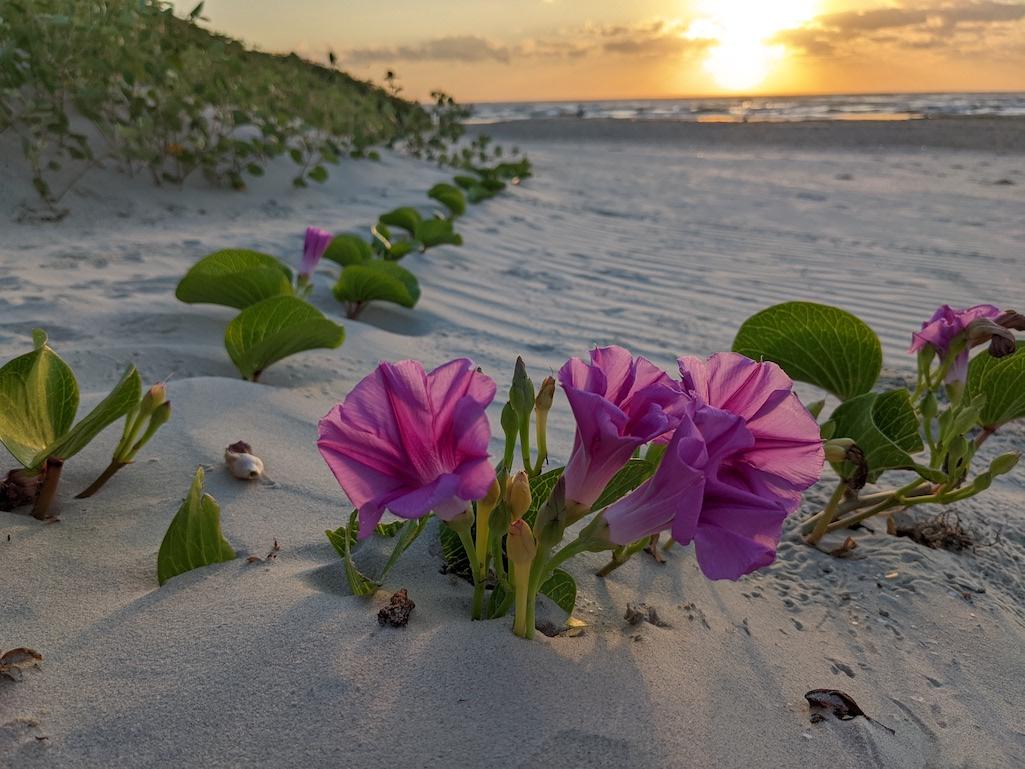
The National Park Service is thinking of developing a formal beach management plan for Padre Island National Seashore/NPS file
Editor's note: This rewords the 10th paragraph to clarify that the bullet points are just options out for discussion, not approved by the seashore staff.
Whether the National Park Service needs to develop a formal beach management plan at Padre Island National Seashore in Texas that would govern sand management, beach driving, and wildlife management for some species is under consideration.
Whether to move forward with developing such a plan, which also would govern marine debris removal and hurricane and storm recovery, is a question open for public comment through March 14.
The public is invited to join any of three in-person, open house listening sessions to provide feedback about beach management at the seashore. Two meetings will be held at the Texas State Aquarium, 2710 N. Shoreline Boulevard, Corpus Christi, Texas 78402 from 6:30 p.m. – 8:30 p.m. on Tuesday, February 21, and Wednesday, February 22. The third meeting will be held at San Antonio Missions National Historical Park, Mission San José, 6701 San José Drive, San Antonio, Texas 78214 from 6:30 p.m. – 8:30 p.m. on Thursday, February 23.
You can find more information on the management proposal, and leave your comments, at this site. Comments also can be hand delivered to the Malaquite Visitor Center or via mail delivered to Padre Island National Seashore Superintendent, Attn: Beach Management, P.O. Box 181300, Corpus Christi, Texas 78480 or during the open house.
Running not quite 70 miles along the Gulf Coast, the national seashore is home to one of the last intact coastal prairie habitats in the United States and is the largest stretch of undeveloped barrier island in the country.
The seashore also has important cultural resources, including underwater archaeological sites associated with the Spanish shipwrecks of 1554, which are the oldest excavated shipwreck sites in the United States and Gulf of Mexico, according to the National Park Service.
Natural resources at the seashore include:
- More than 400 species of flowering plants
- More than 50 species that are state or federally listed or are Migratory Bird Treaty Act species of conservation concern
- Amphibians, reptiles, crustaceans and mollusks, insects, mammals, fish, and more than 380 species of birds
Of particular note, the seashore offers important nesting habitat for the diminutive Kemp's ridley turtles. While this endangered species calls the entire Gulf of Mexico home, Padre Island dominates their nesting in U.S. waters, "making it the most important nesting beach in the United States for this endangered species," according to the Park Service.
Indeed, in the 1980s the national seashore was specifically chosen by international experts to develop a satellite nesting population of Kemp's ridley turtles that could both contribute to global recovery and serve as a backup population in case a disaster hit the Mexican populations, which are largely centered around Playa de Rancho Nuevo at Tamaulipas. Too, the Padre Island work was seen as a way to develop protocols for a captive breeding program, if ever needed.
While the national seashore staff has played a key role in Kemp's ridley reproduction by recovering eggs from nests, incubating them, and then releasing the hatchlings into the Gulf, the management plan under consideration lays out the following four possible scenarios for the program, although none are set in stone and public suggestions for other alternatives are encouraged:
- Potential Pilot Study 1: In-situ nesting – can predation be reduced without moving eggs? Test predation mitigation measures for effectiveness in the protection of Kemp’s ridley sea turtle nests at the Seashore. Study areas would be Malaquite Beach and/or near the research cabin.
- Potential Pilot Study 2: Does moving nests protect them from inundation, or flooding? Inundation, or flooding, of nests can kill the eggs, depending on how long the nest is under water. Would relocating the nests higher on the beach improve chances for survival? This measure has been successful elsewhere for other sea turtle species. Study areas would be Malaquite Beach and/or near the research cabin.
- Potential Pilot Study 3: Remove or reduce NPS vehicles from Malaquite Beach, except for emergency use. Malaquite Beach is closed to visitor driving. NPS staff drive here, potentially impacting wildlife and visitor experience. Would reducing NPS vehicle use improve the visitor experience and better protect sea turtles, in-situ nests, and other wildlife? Exceptions would be allowed for emergencies.
- Potential Pilot Study 4: Would unmanned aerial vehicles or other video technology be effective monitoring for nesting sea turtles?
Padre Island also is the only area in Texas where all five threatened and endangered species of sea turtles -- Kemp's ridley, Green, Loggerhead, Leatherback, and Hawksbill -- nest or rely on habitat in the seashore.

 Support Essential Coverage of Essential Places
Support Essential Coverage of Essential Places



